Every time I bring my folding origami kayak, the Oru Kayak Inlet, to the lake near my house, I attract a crowd of curious boaters. In the 3 minutes it usually takes me to build my boat, they pepper me with questions:
“Is that an origami kayak? How much does it weigh? Is it expensive?”
Yes, 20 pounds, and yes, I reply — but it’s worth it.
I bought my Oru Kayak Inlet in summer 2020 after lusting after one for months. Kayaking seemed like a fun, safe, socially distant activity I could do alone, but I wanted a boat that I could easily transport to the lake by myself.
I’ve had the Inlet for a year now and am still madly in love with it. Here’s why the Oru Kayak Inlet was a great choice for me:
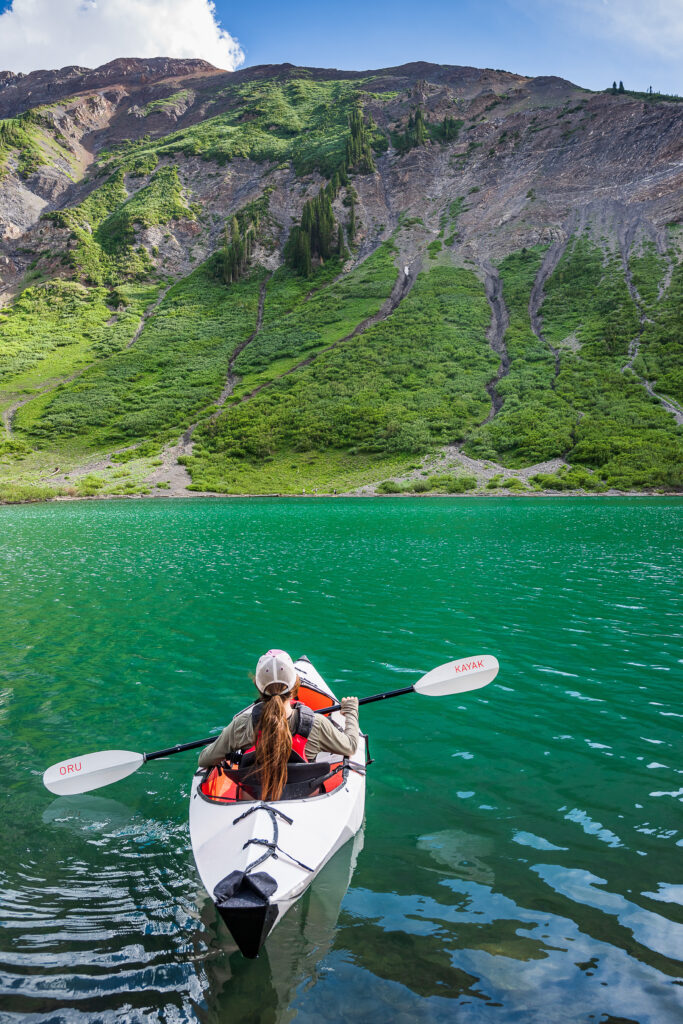
Portable: I wanted a boat I could manage entirely my own. Little 5’2″, weak-armed me didn’t want to haul a heavy plastic kayak on and off the top of my car, and inflatable kayaks seemed like a pain to inflate and deflate every time. With the 20-pound Oru Kayak Inlet, I can easily bring my kayak to the lake and back by myself with zero help. It’s also easy to store because it takes up much less space than a traditional kayak.
Convenient: It takes me about 3-4 minutes to build my boat. The first time it took 15 minutes, and the time quickly went down from there. It’s easy to learn and remember.
Semi-affordable: At $899, the Oru Kayak Inlet is much more expensive than a cheap inflatable kayak. But it’s also the cheapest model sold by Oru Kayak. (A few years ago, Juno I modeled for Oru Kayak’s tandem kayak, the Haven, which retails for $1,999.)
If you buy any Oru Kayak and don’t like the experience, they have a 30-day no-questions-asked return policy. And if you wait longer than 30 days, there’s also a robust resale market. Searches for “Oru Kayak used” spiked last summer, and all the used models I’ve seen sell fast for nearly as much as a brand-new one.
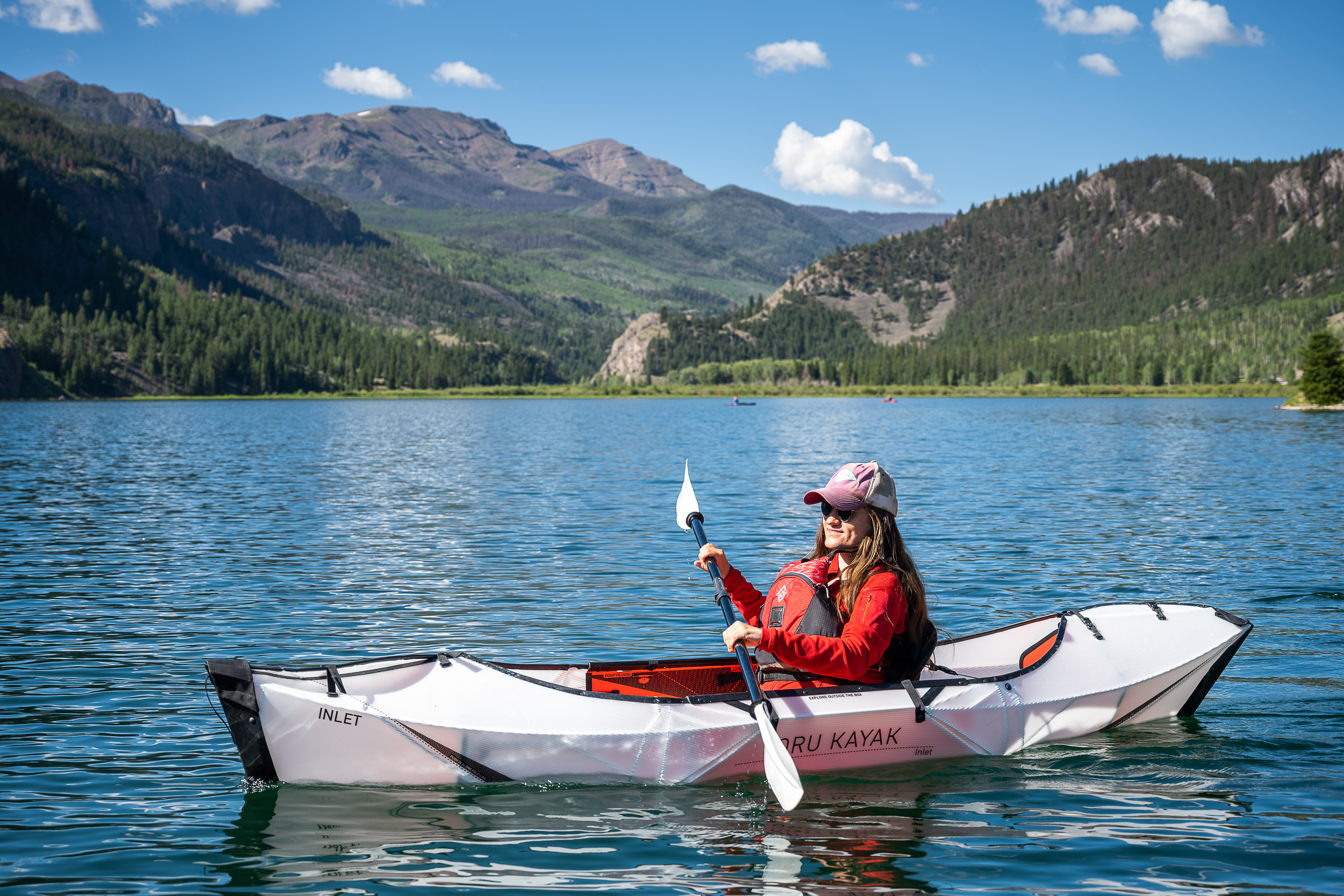
I love taking my Inlet on Lake McIntosh, a reservoir near my house in Colorado with gorgeous views of Longs Peak in Rocky Mountain National Park. It’s simple enough to build that I can take it out for a quick morning or evening paddle on weekdays, and portable enough that I can bring it with me on road trips around the country.
| Pros of the Oru Kayak Inlet | Cons of the Oru Kayak Inlet |
| Insanely portable at just 20 pounds | Expensive compared to traditional kayaks |
| Easy to set up in less than 5 minutes | Lightweight, open-cockpit design only works for calm waters |
| Only takes one person to build and transport | Low-cushion seat uncomfortable for long rides |
| Cheapest of all the Oru Kayak models | |
| Great for beginners | |
| Rated for 20,000 fold cycles with a 10-year UV treatment |
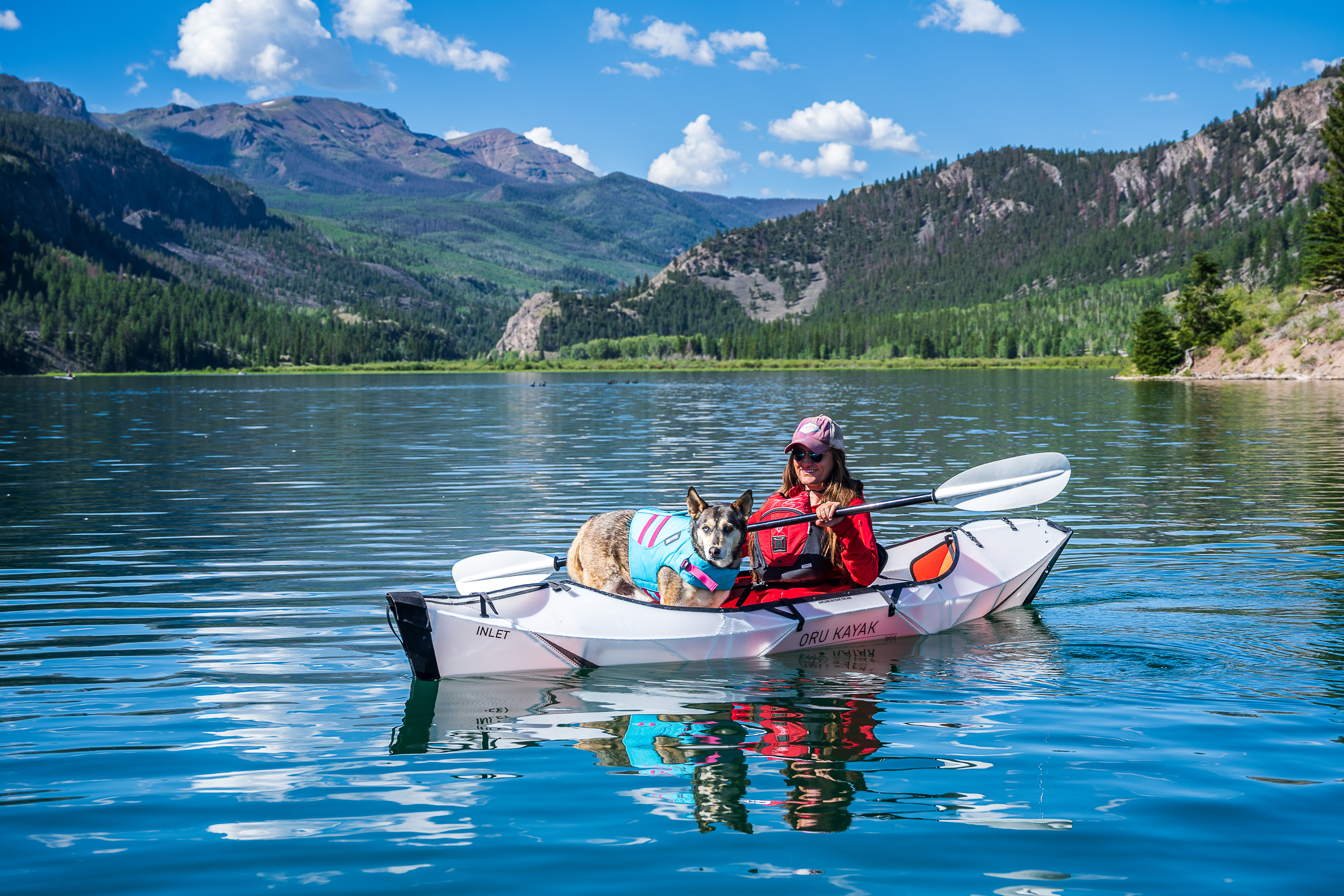
| Best Use | Kayaking on flat water or very slow rivers |
|---|---|
| Material(s) | 5mm double-layered polypropylene plastic |
| Length | 10 feet |
| Width | 30 inches |
| Weight | 20 pounds |
| Number of Paddlers | 1-person |
| Paddle Included | No |
| Weight Capacity | 275 pounds |
| Packed Dimensions | 40 x 19 x 10 inches |


Who is the Oru Kayak Inlet good for?
According to the Oru Kayak website, the Inlet is “the perfect fit for beginners, seniors and people who want to enjoy lake and slow-river paddling.”
As an inexperienced kayaker myself, I can confirm that it’s perfect for people who don’t know much about kayaking, but it’s also fun for expert kayakers looking to slow down and enjoy their surroundings.
With its wide-open cockpit, the Inlet isn’t a good idea for whitewater or any water that’s moving fast.
The lightweight design that makes it super portable also makes it hard to paddle on windy days. I’ve noticed even a moderate wind that wouldn’t budge a typical kayak can make it hard to maneuver the Inlet.
But for calm, crystal-clear alpine lakes or sluggish rivers, it’s perfect. I can’t wait to paddle it more this summer and for many summers to come.
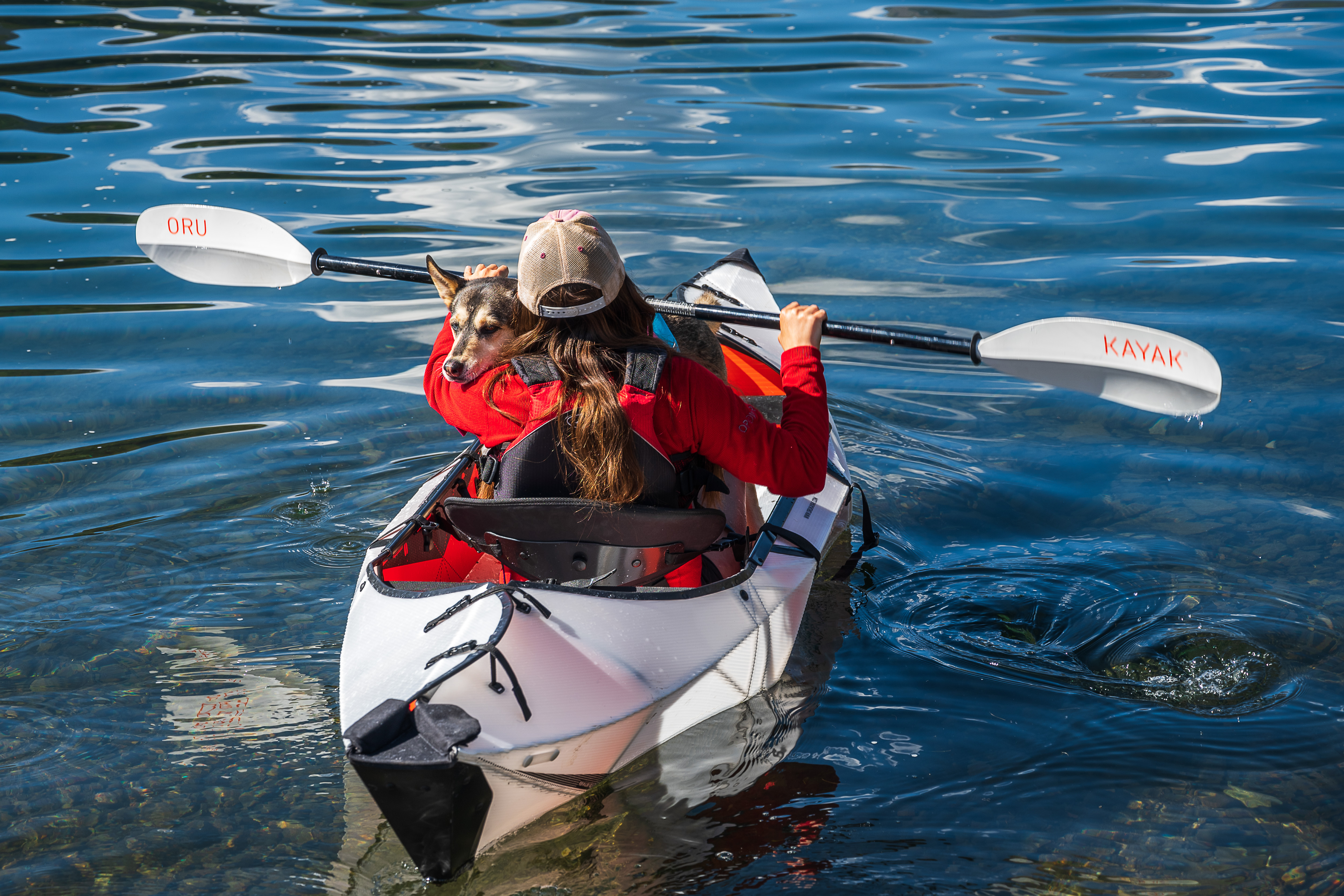

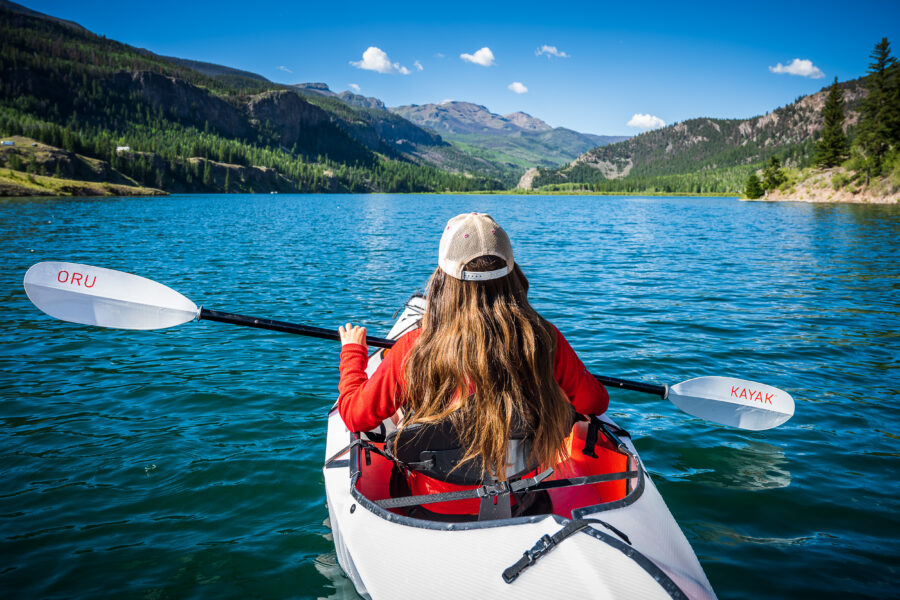
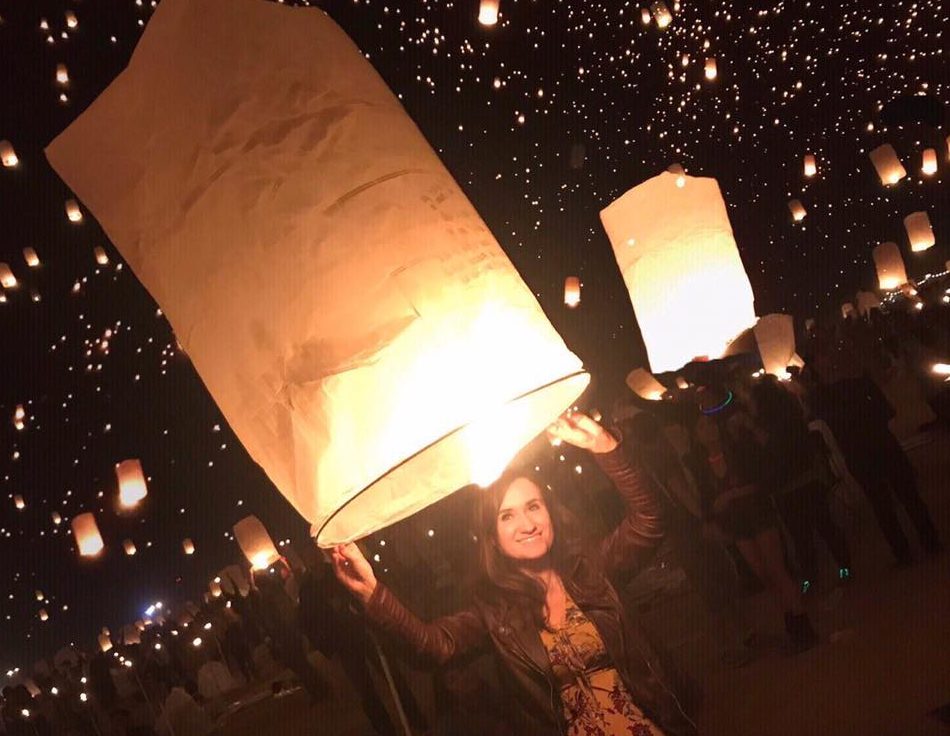
5 Comments
Leave your reply.